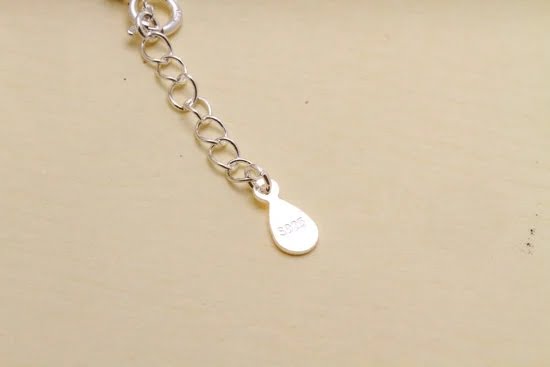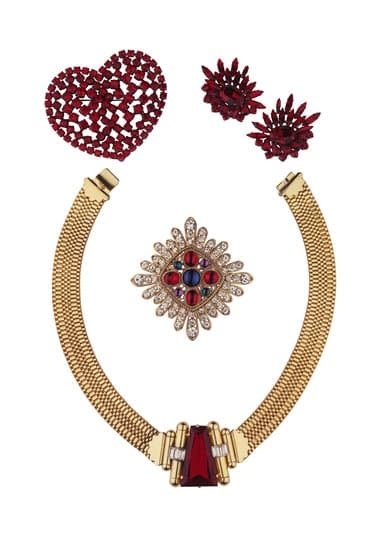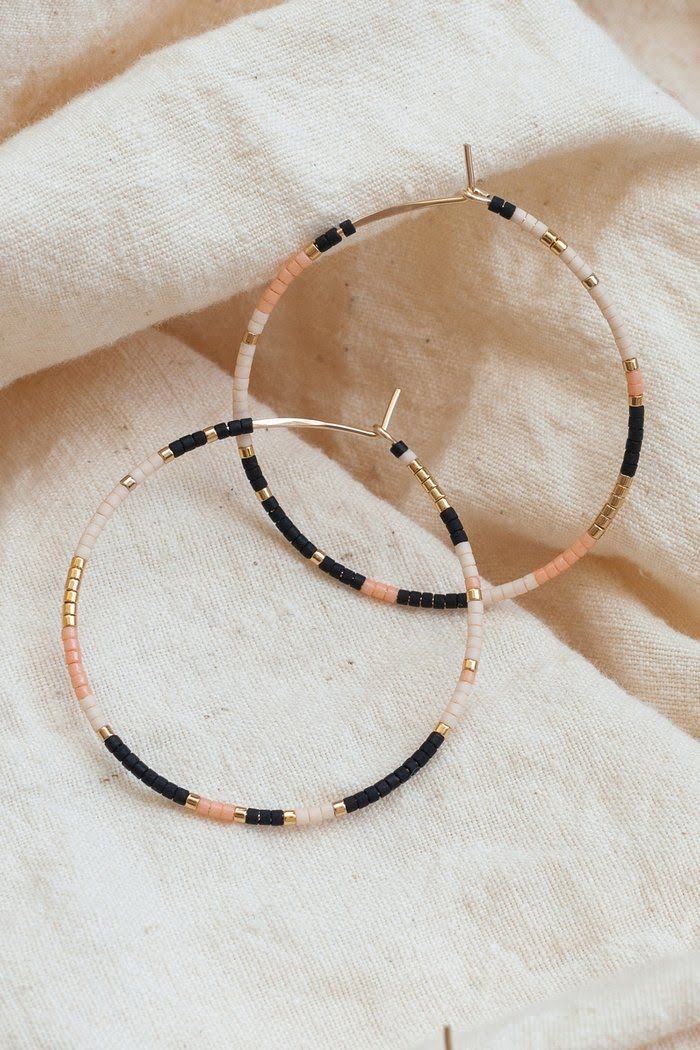In recent years, there has been a growing trend of making homemade jewelry boxes, and one popular option is creating your own using cardboard. This article will guide you through the process of making a stunning DIY jewelry box from cardboard, allowing you to personalize it according to your preferences.
Creating your own jewelry box from cardboard offers numerous benefits. Not only is it a cost-effective option compared to purchasing a ready-made one, but it also allows you to unleash your creativity and design a unique piece that perfectly matches your style and needs. Additionally, working with cardboard provides endless customization possibilities, enabling you to experiment with different designs and techniques.
When embarking on the journey of making a DIY jewelry box from cardboard, it’s important to gather all the necessary materials beforehand. These include various sizes and thicknesses of cardboard, adhesive options such as glue or tape, and decorative materials like paint, fabric, or embellishments. Each material choice plays a crucial role in achieving the desired look and durability for your jewelry box.
Whether you are an experienced crafter or just starting out with do-it-yourself projects, this article will provide you with step-by-step instructions on how to prepare the cardboard pieces and assemble them into a functional jewelry box. Furthermore, we will explore different design ideas and customization options to make your jewelry box truly one-of-a-kind.
So let’s dive into the world of DIY jewelry boxes from cardboard and discover the limitless possibilities of creating something beautiful and practical at the same time.
Materials Needed for a DIY Jewelry Box from Cardboard
To create a DIY jewelry box from cardboard, you will need a variety of materials to ensure its strength, durability, and aesthetic appeal. Here is a comprehensive list of the materials you will need:
- Cardboard: Choose a sturdy and thick cardboard for the construction of your jewelry box. It should be able to withstand the weight of jewelry items and endure regular usage. The thickness of the cardboard can vary depending on personal preference, but it is generally recommended to use cardboard with a thickness between 2-4mm.
- Adhesive: Select an adhesive that is suitable for bonding cardboard surfaces securely. options include craft glue, hot glue gun, or double-sided tape. Consider the specific needs of your project and choose an adhesive that provides adequate strength and dries clear.
- Decorative Materials: To personalize your jewelry box, consider using decorative materials such as paint, fabric, or embellishments. Acrylic paint works well on cardboard surfaces and allows for various design possibilities. Additionally, you can use fabric to line the interior of the box or add embellishments like beads, rhinestones, or lace for added charm.
- Cutting Tools: You will need cutting tools to measure and cut the cardboard pieces accurately. A utility knife or scissors can be used for this purpose. Ensure that your cutting tools are sharp to achieve clean-cut edges.
- Measuring Tools: Use measuring tools like a ruler or measuring tape to ensure accurate dimensions when cutting the cardboard pieces.
- 6.Other tools: Depending on your design and customization choices, you may also require additional tools such as paintbrushes, stencils, or sandpaper for finishing touches.
| Material | Description |
|---|---|
| Cardboard | Sturdy and thick cardboard (2-4mm) for construction |
| Adhesive | Craft glue, hot glue gun, or double-sided tape |
| Decorative Materials | Acrylic paint, fabric, embellishments (beads, rhinestones, lace) |
| Cutting Tools | Utility knife or scissors |
| Measuring Tools | Ruler or measuring tape |
Step-by-Step Guide
When it comes to creating a DIY jewelry box from cardboard, proper preparation of the cardboard is crucial for ensuring a sturdy and durable final product. In this step-by-step guide, we will walk you through the process of preparing the cardboard for your jewelry box.
1. Selecting the Right Thickness and Quality of Cardboard:
Before getting started, it’s important to choose the right type of cardboard for your jewelry box. Opt for a thick and sturdy cardboard that will provide stability and protection for your precious jewelry. Look for corrugated or chipboard cardboard options as they tend to be more robust than regular flat cardboard.
2. Measuring and Cutting the Cardboard Pieces:
Once you have your chosen cardboard, it’s time to measure and cut it into the necessary pieces for your jewelry box. Begin by measuring and marking out the dimensions of each part – the bottom, sides, lid, and any additional compartments you may want to include. Use a ruler or measuring tape to ensure accurate measurements.
Next, carefully cut along the marked lines using a utility knife or sharp scissors. Take your time and make precise cuts to ensure clean edges. Remember that accuracy in cutting is essential as any discrepancies in measurements can affect how well the pieces fit together during assembly.
3. Handling and Storing Cardboard Properly:
To maintain the integrity of the cardboard pieces, handle them with care throughout the preparation process. Avoid placing heavy objects on top of them or folding them excessively as this can weaken their structure.
Store your prepared pieces in a clean and dry area where they won’t be exposed to moisture or humidity. If necessary, stack them flat with a layer of protective material between each piece to prevent scratches or damage.
By following these guidelines for preparing the cardboard, you’ll be well on your way to creating a sturdy foundation for your DIY jewelry box project. The next steps will focus on designing, customizing, and assembling the jewelry box using these prepared pieces.
Design and Customization Ideas
When it comes to creating a DIY jewelry box from cardboard, the possibilities for design and customization are endless. Whether you prefer a traditional look, modern aesthetic, or want to incorporate a specific theme into your jewelry box, there are numerous ways to make it truly unique.
1. Traditional Designs: For those who appreciate timeless elegance, a classic design is the way to go. Consider adding delicate patterns or motifs using stencils or cut-outs. You can also opt for a vintage-inspired look by distressing the cardboard and adding an antique finish with paints and varnishes.
2. Modern Styles: If sleek and contemporary is more your style, experiment with geometric shapes and minimalist designs. Consider using metallic paints or spray paint for a modern touch. You can also create an abstract pattern using masking tape or incorporate clean lines through precision cutting.
3. Themed Jewelry Boxes: Make your jewelry box reflect your interests or passions by incorporating a specific theme into its design. For example, if you love nature, consider decorating the box with pressed flowers or painting it with intricate botanical patterns. If you’re passionate about travel, use maps or postcards as decoupage materials to give your box a wanderlust feel.
Personalization is another important aspect when designing your DIY jewelry box. Consider adding monograms made from cardboard cut-outs or attaching initials using adhesive gems. You can also incorporate small trinkets like charms or pendants that hold sentimental value to make it truly personalized.
When decorating your jewelry box, don’t limit yourself to just paint. Explore different techniques such as decoupage, where you adhere paper cutouts onto the surface of the cardboard using glue or lacquer. Stenciling is another popular method that allows you to create intricate patterns on the cardboard surface by applying paint through pre-cut templates.
Remember that when working on any project involving DIY cardboard jewelry boxes, safety should be prioritized at all times. Make sure to work in a well-ventilated area, use proper protective equipment, and follow any safety guidelines provided by the materials or adhesives you choose to use. By considering your personal style and exploring creative techniques, you can create a one-of-a-kind jewelry box that perfectly showcases your individuality.
Assembling the DIY Jewelry Box
Once you have prepared all the necessary cardboard pieces, it’s time to assemble your DIY jewelry box. This step-by-step guide will walk you through the process of putting all the parts together to create a sturdy and functional jewelry storage solution.
First, lay out all the cardboard pieces and make sure they are cut to the correct sizes according to your design. It is essential to double-check the measurements before proceeding with assembly. Next, determine which sides of each piece will be visible and mark them accordingly. This is especially important if you plan on decorating or painting specific areas of your jewelry box.
To attach the cardboard pieces together, there are a few methods you can use depending on your preference and available materials. One option is to use strong adhesive such as glue or double-sided tape. Apply a thin layer of adhesive on one edge of a piece, then carefully align it with another piece and press firmly for a few seconds to secure them together. Repeat this process for all edges until the box starts taking shape.
Another method is using reinforcement techniques like tabbed joints or corner brackets made from extra pieces of cardboard. These additional supports can provide added strength and stability to your jewelry box. To create a tabbed joint, cut small tabs on one edge of a piece and corresponding slots on another piece, then simply slide the tabs into the slots and secure them with adhesive.
During assembly, it may be helpful to use clamps or clothespins to hold the cardboard pieces in place while the adhesive dries. This will ensure that everything stays aligned properly as you continue building your jewelry box.
Keep in mind that depending on your design and desired functionality, you may need additional hardware or tools during this assembly process. For example, if you want a hinged lid for your jewelry box, you will need small hinges and screws to attach it securely. If you decide to add a latch or handle, make sure to select suitable hardware that complements the overall design and size of your jewelry box.
By following these steps and considering your preferred assembly techniques, you can successfully assemble your DIY jewelry box from cardboard. With each piece securely attached, your jewelry box will be one step closer to completion and ready for the next stage of adding compartments and storage solutions.
Adding Compartments and Storage Solutions
Importance of Organizing Jewelry
When it comes to jewelry, organization is key. Without proper storage solutions, pieces can get tangled, lost, or damaged. That’s why it’s essential to incorporate compartments and storage solutions into your DIY jewelry box from cardboard. By doing so, you’ll not only keep your collection neatly organized but also protect each piece from scratches and other potential damage.
Creating Efficient Compartments
One of the great advantages of making your own jewelry box is the ability to customize it to fit your specific needs. You can create compartments that perfectly accommodate different types of jewelry, such as necklaces, bracelets, rings, and earrings. To create efficient compartments, consider using dividers made from cardboard. You can cut strips of cardboard and glue them in place within the box to separate each section.
Incorporating Extra Storage Options
In addition to compartments, there are other storage options you can incorporate into your DIY jewelry box for added functionality. For example, consider creating hidden compartments by adding a false bottom or a secret drawer that slides out discreetly. This provides an additional space for storing precious or valuable items separately from everyday pieces.
You can also add hooks made from small sections of cardboard or fabric loops to hang earrings or necklaces neatly inside the box. Another idea is to attach small pouches or pockets using fabric or adhesive materials on the interior walls of the box for holding smaller items like charms or pendants.
By incorporating these extra storage options into your DIY jewelry box from cardboard, you’ll not only enhance its usability but also maximize the available space for organizing your entire collection effectively.
Styling and Finishing Touches
Enhancing the Aesthetic Appeal
Once you have assembled your DIY jewelry box from cardboard, it’s time to add those final touches that will enhance its overall appearance and make it truly unique. These styling and finishing touches can be customized to match your personal style and preferences. Here are some tips to help you make your jewelry box visually appealing:
- Adding a Glossy Finish: To give your jewelry box a polished look, consider applying a glossy finish. This can be done by using varnish or a clear coat of paint specifically designed for cardboard projects. Apply the finish evenly and allow it to dry completely before handling.
- Lining the Interior: Adding fabric lining to the interior of your jewelry box not only adds elegance but also protects your precious items from scratches or damage. Choose a fabric that complements the overall design of your box and cut it into pieces that fit each section of the interior. Use adhesive or double-sided tape to secure the fabric in place.
- Decorative Elements: You can further enhance the aesthetic appeal of your jewelry box by attaching decorative elements such as ribbons, buttons, or beads. These embellishments can be glued onto the exterior surface or used as handles for easy opening and closing of the box.
Durability and Longevity
While styling and finishing touches are important, it is equally crucial to ensure that they stand the test of time. By taking certain measures, you can increase the durability and longevity of your DIY jewelry box:
- Sealing with a Protective Layer: Once you have added all the desired finishes, apply an additional protective layer over them. This could be a clear sealant spray or another coat of varnish or paint designed for sealing purposes. This layer will protect the finishes from wear, tear, and moisture.
- Regular Dusting and Cleaning: Just like any other piece of furniture or decor item, your jewelry box will require periodic cleaning to maintain its beauty. Use a soft cloth or a feather duster to remove dust and debris regularly. Avoid using harsh chemicals that may damage the finishes.
- Safe Storage: When not in use, it is essential to store your jewelry box in a cool and dry place away from direct sunlight, extreme temperatures, and humidity. This will prevent warping or discoloration of the cardboard over time.
By following these styling tips and care instructions, you can create a visually stunning DIY jewelry box from cardboard that not only serves as a functional storage solution but also adds a touch of personal style to your space. Let your creativity shine through every step of the process and enjoy the satisfaction of owning a unique handmade piece.
Maintenance and Care Instructions
In order to ensure the longevity of your DIY jewelry box made from cardboard, it is important to follow proper maintenance and care instructions. By taking a few simple steps, you can keep your jewelry box in pristine condition for years to come.
First and foremost, it is essential to regularly clean your jewelry box. Dust and dirt can accumulate over time, diminishing the appearance of the box. To clean the exterior, simply wipe it down with a soft cloth or use a small brush to remove any debris that may have gotten trapped in crevices. For the interior, you can use a mild soap solution on a cloth to gently wipe away any stains or residue.
It is also crucial to protect your DIY jewelry box from excessive moisture or heat. Prolonged exposure to these elements can cause the cardboard to warp or weaken. Store your jewelry box in an area where it will not be exposed to extreme temperature fluctuations or humidity levels. Avoid placing it near windows or sources of direct sunlight.
To prevent scratches or dents, handle and store your jewelry box with care. Be mindful of sharp objects or rough surfaces that could accidentally damage its delicate structure. If you need to transport the jewelry box, consider using a protective case or wrapping it in soft fabric.
Lastly, although cardboard may not be as durable as other materials traditionally used for jewelry boxes, minor damages can be repaired with ease. If you notice any tears, rips, or loose pieces of cardboard, use adhesive specifically designed for paper products to fix them. You can also reinforce weak areas by adding additional layers of cardboard on top.
By following these maintenance and care instructions, you can enjoy your homemade DIY jewelry box from cardboard for many years while keeping your precious treasures organized and protected at all times.

Welcome to my jewelry blog! My name is Sarah and I am the owner of this blog.
I love making jewelry and sharing my creations with others.
So whether you’re someone who loves wearing jewelry yourself or simply enjoys learning about it, be sure to check out my blog for insightful posts on everything related to this exciting topic!





